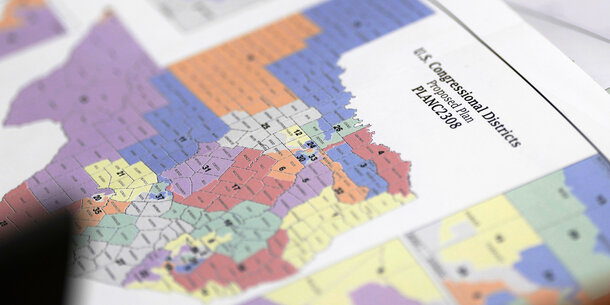The Census Bureau’s release of apportionment numbers last week kicked off what will likely be the most challenging redistricting cycle in recent decades. Here are some takeaways from the numbers released last week.
The apportionment was mostly in line with expectations, but there were some surprises.
While the apportionment counts announced by the Census Bureau were broadly in line with expectations, there were surprises. In particular, Arizona, Florida, and Texas, three fast-growing and demographically diverse states that had been expected to gain seats, either failed to do so or gained fewer seats than expected. Meanwhile, New York, which had been considered at serious risk of losing two seats, ended up only losing one seat, and came within 89 people of not losing any seats. Minnesota and Rhode Island also unexpectedly retained seats they had been widely projected to lose, although Minnesota exceeded the threshold by only 26 people.
Despite the unexpected results, it’s still too early to say what accounts for the variations from projections and, critically, whether undercounts in communities of color contributed to the results. That’s because while apportionment numbers reveal how many people live in a state, they don’t tell where people live within a state or about their age, race, or ethnicity. That information will have to wait until mid-August, when the Census Bureau will release the more granular block-level datasets used to draw maps, after which a fuller picture of potential undercounts will begin to emerge. Even then, a complete picture likely won’t be available until 2022 or later when the Census Bureau publishes undercount estimates.
Republicans will once again have an upper hand in redistricting, but not as much as during the last cycle.
After reapportionment, Republicans will have sole control of the drawing of 179 congressional districts in the upcoming round of redistricting, compared with 49 districts for Democrats.
Notably, the Republicans’ significant advantage would persist even if Democrats in New York were to reject maps drawn by the state’s new advisory commission and draw their own map. (Republican-controlled Iowa and Utah also have advisory commissions whose maps could be overridden by those states’ legislatures if they want.)
But the GOP’s map drawing advantage is not as great as it was during the previous redistricting cycle after the Tea Party midterms of 2010, which gave Republicans sole control over the drawing of 213 congressional districts — 34 more than today. Because of reforms in states like Michigan and Colorado, a record 127 seats this decade will be drawn by independent or bipartisan commissions (compared to 88 last decade), while the Democrats’ ability to win governorships in key states like Pennsylvania and Wisconsin means that there is divided government in several large states that saw aggressive gerrymandering last decade. Still, single-party control of the redistricting process, especially in the South, is likely to portend another discriminatory cycle of linedrawing.
Congressional districts will be the largest ever.
The average size of U.S. congressional districts increased from 710,767 in 2010 to 760,367 after this year’s reapportionment, making districts nearly three times larger than they were in 1929 when the current size of the U.S. House of Representatives was set.
But there is considerable variation among states. Montana, which gained a second district in this year’s reapportionment, will have the country’s smallest districts, with just 542,113 people per district. By contrast, neighboring Idaho’s two districts will have 919,553 people each, making them the largest districts in states with two or more districts.




